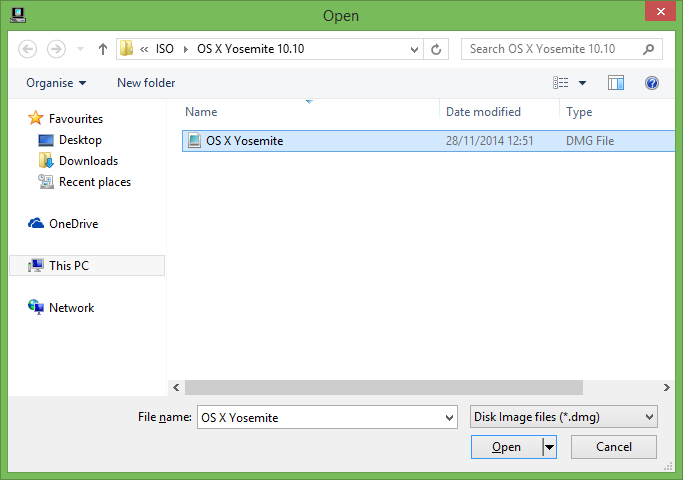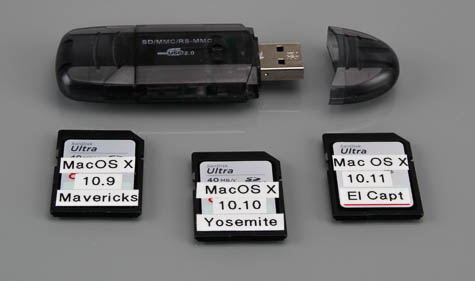- The Easiest Way: Use DiskMaker X. By far the easiest way to create a bootable drive is to use the DiskMaker X application, which automates the entire process in the next method. To start out, download the newest version of DiskMaker X from its website. Currently, that's the Yosemite Beta version.
- Also, DiskMaker X 4 beta will work only when launched from Mac OS X 10.7.x, OS X 10.8.x or OS X 10.9.x. DiskMaker X has NOT been tested running on Yosemite. It is guaranteed to work on OS X 10.7, 10.8 and 10.9. Don’t send me incompatibility reports for Yosemite yet. The custom icon won’t be pasted at the end of the process.
- One Click to Burn Mac OS X 10.10 Yosemite to a USB Flash DriveDiskMaker X (formerly Lion DiskMaker) is an application built with AppleScript that you can use.
Helps you to quickly create a bootable macOS (Lion, Mountain Lion, Mavericks, Yosemite, El Capitan, Sierra, High Sierra and Mojave) USB disk via an intuitive and powerful user interface
What's new in DiskMaker X 9.0:
- Compatible with macOS Catalina Install app
- Notarized for use with macOS Catalina
- Updated the minimail USB thumb drive requirement (now 16 GB)
- Updated French localization
Diskmaker x is the same as ordinary OS X applications. We just need to drag diskmaker x to the application folder. The following editor will give you a detailed introduction to the tutorial of making Yosemite installation U disk by diskmaker X. Step 1: Download diskmaker X. The editor provides a link to the Chinese version of diskmaker X.
Read the full changelogDiskMaker X is a lightweight and very easy-to-use macOS utility specially made to help you create a bootable drive from macOS installer packages, with support for the last three macOS releases, from Mavericks (10.9) to Catalina (10.15).
Helps you to effortlessly and quickly create bootable drives with different macOS versions
DiskMaker X comes with a user-oriented interface and an intuitive built-in wizard that makes it easy for you to find the macOS install app and create a bootable install disk.
One of the first things you need to do once you launch DiskMaker X, is to select the version of macOS of which you want to make a boot disk of. DiskMaker X is capable to automatically find the macOS install packages with the help of Spotlight.
If the found macOS installation package is not the one you want to use for the bootable drive, you always have the option to use another copy and browse your Mac’s hard disk for the desired installer.
Carefully backup your data and prepare the targeted USB drive or disk volume
It is also worth mentioning that DiskMaker X will erase the entire content, including other volumes on the thumb drive you want to use as a bootable disk. Consequently, it is recommended to backup your data on another disk before initiating the building process.
However, if you decide to use another type of disk, DiskMaker X will only erase the selected volume, leaving other disks and volumes untouched.
Intuitive interface and smooth-running utility for all types of Mac users
DiskMaker X comes as an answer for Mac users that need a quick, simple and reliable way to create bootable USB drives and disk drives that can be used to install or reinstall the operating system on various Macs.
Moreover, we appreciated DiskMaker X's uncluttered interface with clear and easy to follow instructions that can be followed even by the most inexperienced Mac users.
Filed under
DiskMaker X was reviewed by Sergiu Gatlan- OS X installer app
- 8 GB+ writable DVD, USB thumb drive, external Firewire or Thunderbolt drive, SD card
DiskMaker X 9.0

 Softpedia Editor's Pickadd to watchlistsend us an update
Softpedia Editor's Pickadd to watchlistsend us an update- runs on:
- macOS 10.9 - 10.15 (Intel only)
- file size:
- 6.3 MB
- filename:
- DiskMaker_X_9.dmg
- main category:
- Utilities
- developer:
- visit homepage
top alternatives FREE
top alternatives PAID
It was 2009 when Apple last released a new operating system on physical media. Things have proceeded remarkably smoothly since version 10.7 switched to download-only installers, but there are still good reasons to want an old, reliable USB stick. For instance, if you find yourself doing multiple installs, a USB drive may be faster than multiple downloads (especially if you use a USB 3.0 drive). Or maybe you need a recovery disk for older Macs that don't support the Internet Recovery feature. Whatever the reason, you're in luck, because it's not hard to make one.Diskmaker X For Mac

As with last year, there are two ways to get it done. There's the super easy way with the graphical user interface and the only slightly less easy way that requires some light Terminal use. Here's what you need to get started.
- A Mac, duh. We've created Yosemite USB from both Mavericks and Yosemite, but your experience with other versions may vary.
- An 8GB or larger USB flash drive or an 8GB or larger partition on some other kind of external drive. For newer Macs, use a USB 3.0 drive—it makes things significantly faster.
- The OS X 10.10 Yosemite installer from the Mac App Store in your Applications folder. The installer will delete itself when you install the operating system, but it can be re-downloaded if necessary.
- If you want a GUI, you need the latest version of Diskmaker X app—we wrote this article based on version 4 beta 2, but if a 'final' version is released alongside Yosemite we'll update the article. This app is free to download, but the creator accepts donations if you want to support his efforts.
- An administrator account on the Mac you're using to create the disk.
The easy way
Once you've obtained all of the necessary materials, connect the USB drive to your Mac and run the Diskmaker X app. The app will offer to make installers for OS X 10.8, 10.9, and 10.10, but we're only interested in Yosemite today.
 Advertisement
Advertisement Diskmaker X has actually been around since the days of OS X 10.7 (it was previously known as Lion Diskmaker), but it's more important now because Apple has made alterations to the installer that prevent easy USB drive creation using the built-in Disk Utility app. It's still possible to create a disk manually using a Terminal command (which we'll go into momentarily), but Diskmaker X presents an easy GUI-based way to do it that is less intimidating to most people.
Select OS X 10.10 in Diskmaker X, and the app should automatically find the copy you've downloaded to your Applications folder. If it doesn't detect the installer (or if you click 'Use another copy'), you can navigate to the specific installer you want to use. It will then ask you where you want to copy the files—click 'An 8GB USB thumb drive' if you have a single drive to use or 'Another kind of disk' to use a partition on a larger drive or some other kind of external drive. Choose your disk (or partition) from the list that appears, verify that you'd like to have the disk (or partition) erased, and then wait for the files to copy over. The process is outlined in screenshots below.
The only-slightly-less-easy way
If you don't want to use Diskmaker X, Apple has actually included a terminal command that can create an install disk for you. Assuming that you have the OS X Yosemite installer in your Applications folder and you have a Mac OS X Extended (Journaled)-formatted USB drive named 'Untitled' mounted on the system, you can create a Yosemite install drive by typing the following command into the Terminal.
sudo /Applications/Install OS X Yosemite.app/Contents/Resources/createinstallmedia --volume /Volumes/Untitled --applicationpath /Applications/Install OS X Yosemite.app --nointeraction
How To Create Mac OS X Yosemite Bootable USB Using DiskMaker X
The command will erase the disk and copy the install files over. Give it some time, and your volume will soon be loaded up with not just the OS X installer but also an external recovery partition that may come in handy if your hard drive dies and you're away from an Internet connection.
Diskmaker X Yosemite
Whichever method you use, you should be able to boot from your new USB drive either by changing the default Startup Disk in System Preferences or by holding down the Option key at boot and selecting the drive. Once booted, you'll be able to install or upgrade Yosemite as you normally would.